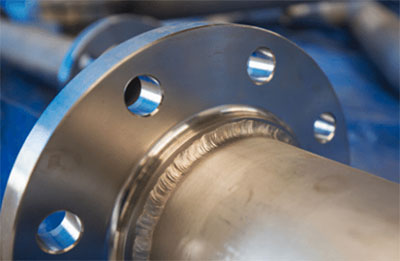Can you weld stainless steel to steel pipe?
Welding is a widely used process for joining two or more pieces of metal. While welding steel to steel is a common practice, welding stainless steel to steel pipe raises some questions. Can you weld stainless steel to steel pipe? Is it safe? What are the precautions that need to be taken?
Firstly, it is important to understand the difference between steel and stainless steel. Steel is an alloy of iron and carbon, while stainless steel contains additional elements like chromium, nickel, and molybdenum. These elements enhance the strength, corrosion resistance, and durability of stainless steel. However, the difference in composition also means that welding stainless steel to steel requires careful consideration.

In general, it is possible to weld stainless steel to steel pipe. However, the success of the weld depends on several factors, including the type of stainless steel, the type of steel pipe, and the welding method used. For example, austenitic stainless steels (such as 304 and 316) are generally easier to weld than ferritic stainless steels (such as 409 and 430). Additionally, the steel pipe should be compatible with the type of stainless steel being used.
One common method of welding stainless steel to steel pipe is TIG (tungsten inert gas) welding. TIG welding produces a high-quality, precise weld that is ideal for joining dissimilar metals like stainless steel and steel. However, TIG welding requires a high level of skill and expertise to execute properly. In addition, it is important to use the correct filler material (such as ER308L) to ensure a strong and durable weld.
Another method of welding stainless steel to steel pipe is MIG (metal inert gas) welding. MIG welding is faster and easier to execute than TIG welding, but it may not produce as high-quality of a weld. MIG welding also requires careful selection of filler material to ensure a strong and durable weld.
It is important to note that welding stainless steel to steel pipe can create a galvanic cell, which can lead to corrosion if not properly addressed. To prevent galvanic corrosion, it is important to use a filler material that is compatible with both the stainless steel and the steel pipe. In addition, proper surface preparation and cleaning is crucial to ensuring a successful weld.
Previous: >> Is 304 stainless steel weldable? Next: >> What is stainless steel welded pipe?






